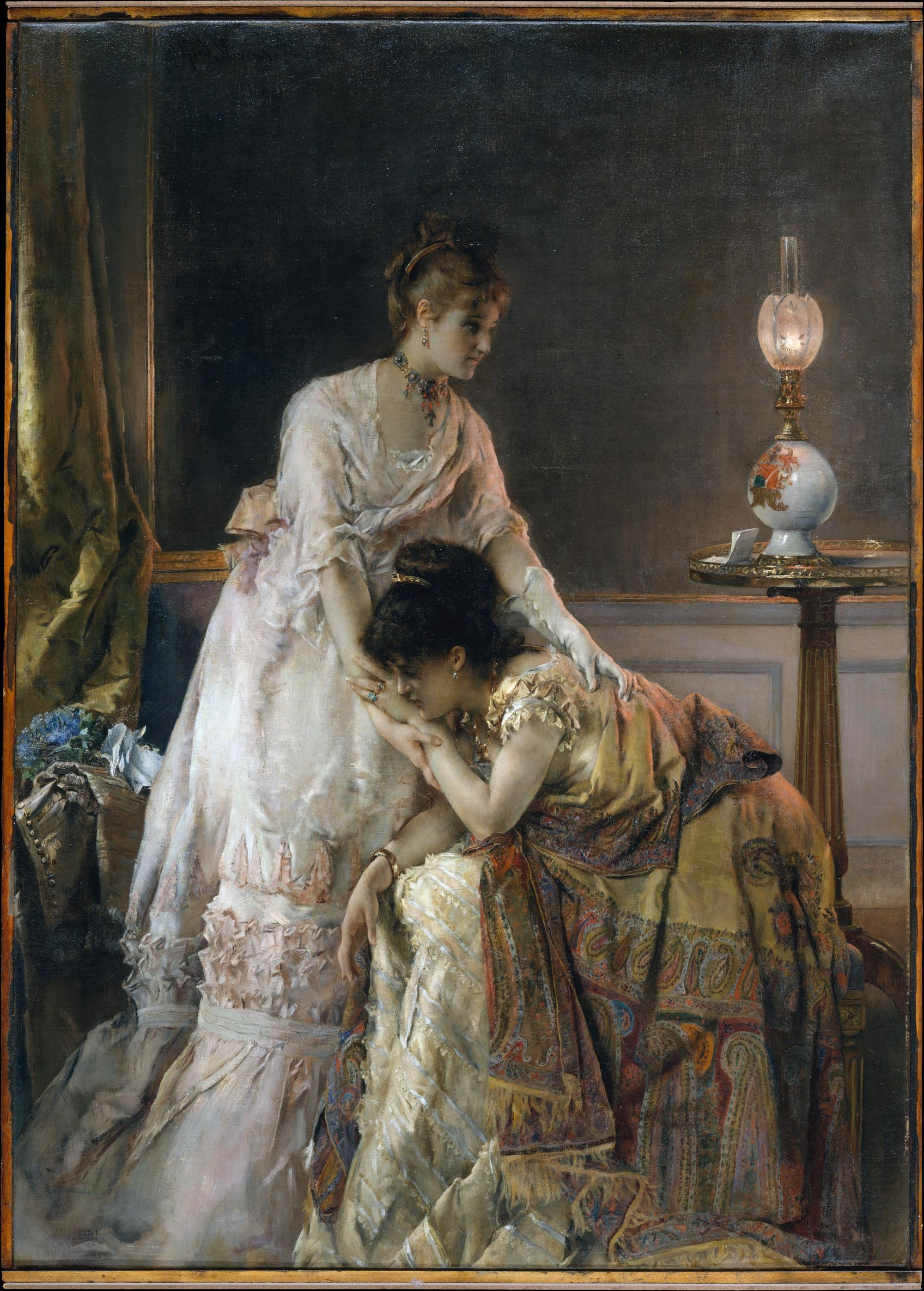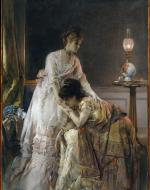Created by Thomas Penola on Fri, 10/04/2019 - 14:04
Description:
After the Ball (1874) was painted by Alfred Stevens. This painting is also known as Confidence and is one of several paintings Stevens produced on the theme of consolation. Alfred Stevens known for his great skill and talents was well versed in many art forms. He not only developed mastery in painting but also a very skilled sculptor. He gained this skill and mastery from years studying Renaissance works in the Church of the Incoronata in Naples, Italy. These years of studying photo Renaissance works allowed him to develop very refined skills rather than becoming a copier of Renaissance materials like others in the time period. In this painting, After the Ball (1874), you can see not only neo-classical influence due to his time studying at the Church of the Incoronata, but also romantic and other influences. The neo-classical influence is expressed in several ways. For one, the extremely realistic proportions and focus on the individual is highly stressed. The background is dark and is contrasted by the beautiful jewelry and white and gold dresses the women are wearing. The influence of studying the Renaissance works is expressed through this use of gold in the dress and in the curtain and lack of much depth in the painting. Although he has transitioned away from iconic images and into realistic proportion and order, he still hangs on to the gold and genral flat aspect of the Renaissance. Finally revealing the internal emotions of the women expresses influence from the romantic time period. We see the pain in the women’s face and the comfort her friend is bringing her though her body language. As viewers we are invited to put ourselves in the place of either the women in pain or her friend. What makes After the Ball (1874) so interesting is although it was painted right after the Romantic era, it still expresses great influence from neo-classical and renaissance works due to Stevens time spent studying in the Church of the Incoronata in Italy.
Copyright:
Associated Place(s)
Part of Group:
Artist:
- Alfred Émile Léopold Stevens


